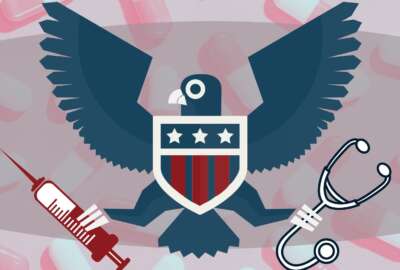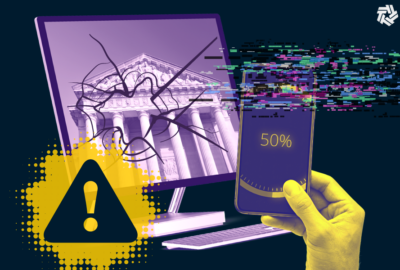

The Office of Personnel Management has established a verification process for adding new family members to FEHB enrollees’ plans, but the Government...
The Federal Employees Health Benefits (FEHB) program may be spending nearly a billion dollars annually on ineligible members.
The Office of Personnel Management, the agency that runs the health insurance program for federal employees and retirees, does not have a clear way to identify and remove FEHB enrollees’ family members who are erroneously part of the program, according to the Government Accountability Office.
“The longer OPM delays its efforts to establish a monitoring mechanism to identify and remove ineligible members from FEHB, the more ineligible members and related improper payments in the program may continue to accrue, costing the program millions, or up to approximately one billion dollars per year, according to OPM’s own estimate,” GAO said in a Jan. 9 report.
OPM said it has received the final report and is planning to flesh out a larger response soon.
OPM’s Healthcare and Insurance Office “will be evaluating potential action items, including timelines, and will provide a comprehensive response to GAO within 180 days upon evaluation of the recommendations,” OPM spokesperson Viet Tran told Federal News Network.
In the meantime, the lack of a monitoring mechanism leaves the FEHB program vulnerable to fraud and improper payments associated with ineligible family members, GAO said.
“For example, a federal employee fraudulently covered two individuals purported to be his wife and stepchild in the FEHB program. The individuals were ineligible and remained on FEHB health insurance for about 12 years. The FEHB program paid claims totaling more than $100,000 on behalf of these ineligible individuals,” GAO said.
Overall, the FEHB program, which covers about 8 million federal employees and their families, collected $59 billion in fiscal 2021, the most recent data available. Identifying ineligible dependents has remained a top challenge for FEHB since 2018, according to OPM’s Office of Inspector General.
The eligibility issue gained more traction after OPM in 2021 began requiring FEHB enrollees to verify family members that they wanted to add to their health insurance plan.
Prior to that 2021 requirement, OPM didn’t ask for any form of verification from FEHB enrollees of their family members’ eligibility for health insurance coverage. Instead, OPM used “self-certification” for federal employees and annuitants to verify family members they wanted to add to their insurance, the agency’s Office of Inspector General found in an earlier 2020 report.
That meant OPM couldn’t sufficiently prevent ineligible members from enrolling in FEHB, the OIG said. The 2020 report also found that the same issue existed for the Federal Employees Dental and Vision Insurance Program (FEDVIP).
OPM said it had previously allowed for self-certification because the cost of creating a verification process would outweigh the cost savings from preventing the addition of ineligible members.
As a more recent response to the issue, OPM created the new verification system in 2021, which added several requirements for FEHB enrollees. Those included requiring new-hire FEHB enrollees to verify family member eligibility through, for example, a birth certificate as proof to add a child to an enrollee’s plan.
But the problem of improper payments in the program has persisted beyond the establishment of the 2021 verification requirement. Notably, that verification did not include a way to remove current ineligible members from the program, who had already enrolled in FEHB prior to the requirement, according to GAO.
In response, GAO recommended that OPM create a mechanism to remove those currently active, but ineligible, members from FEHB. The agency should additionally “assess fraud risks associated with ineligible program members,” GAO said.
In general, OPM agreed with the GAO recommendations, but for one, the agency only “partially concurred” with GAO’s recommendation to implement a mechanism to ensure eligibility follows the 2021 rule. Creating that mechanism depends on the availability of funding and staff to make it happen, according to OPM Associate Director for Healthcare and Insurance Laurie Bodenheimer.
“OPM has already taken steps to ensure that guidance is consistently followed by surveying agencies and carriers related to verification practices and providing ongoing requirements training to carriers and agencies,” Bodenheimer said in response to a draft of the GAO report.
Although these steps from OPM are “positive actions” for ensuring compliance, GAO said implementing a monitoring mechanism would ensure that offices and carriers will be able to verify family member eligibility.
Bodenheimer added that further monitoring, by way of a comprehensive audit, “may be appropriate.”
OPM has also proposed creating a “Governmentwide Enrollment and Member Support” or “GEMS” portal, which could standardize the eligibility review process for FEHB.
“OPM is seeking authority to fund information technology developments such as GEMS through changes to mandatory funding definitions,” Bodenheimer said.
Copyright © 2025 Federal News Network. All rights reserved. This website is not intended for users located within the European Economic Area.
Drew Friedman is a workforce, pay and benefits reporter for Federal News Network.
Follow @dfriedmanWFED



